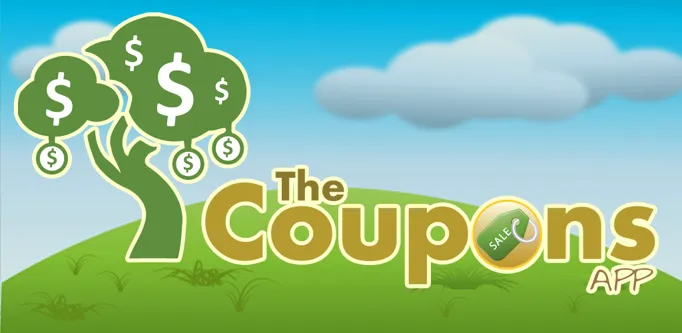
Rising food prices have become a significant challenge for many households. Managing food costs as part of budgeting strategies is crucial to navigate these increasing expenses. Eggs, butter, milk etc. all cost more than they did five years ago. But unfortunately, most people aren’t earning enough money to cover it. That’s why saving money at the grocery store is vital.
Understanding Your Grocery Spending
Understanding your grocery spending is crucial to creating a realistic grocery budget and saving money on groceries. The average cost of groceries per month varies based on income, household size, and location. According to the U.S. Bureau of Labor Statistics, the average annual cost of groceries for a consumer unit is $6,053, which works out to about $504 per month. Knowing these figures can help you gauge where your grocery spending stands and identify areas for improvement.
Average Cost of Groceries Per Month
Breaking down the average cost of groceries per month can give you a clearer picture of where your money goes. Here’s a general idea of what you might expect to spend:
-
Meat, poultry, fish, and eggs: $150-$200 per month
-
Dairy products: $50-$75 per month
-
Fruits and vegetables: $50-$75 per month
-
Grains: $20-$30 per month
-
Pantry items: $20-$30 per month
-
Snacks and beverages: $20-$30 per month
By understanding these categories, you can better manage your grocery costs and make informed decisions about where to cut back.
How to Save Money on Groceries
There are several effective strategies to save money on groceries:
-
Planning meals and making a shopping list: This helps you avoid impulse buys and ensures you only purchase what you need.
-
Shopping sales and stockpiling non-perishable items: Take advantage of sales to buy items in bulk and store them for future use.
-
Using digital coupons and loyalty programs: Many grocery stores offer digital coupons and loyalty programs that can significantly reduce your grocery bill.
-
Buying in bulk and freezing items: Purchase items like meat and frozen veggies in bulk and freeze them to save money in the long run.
-
Shopping at discount grocery stores or using cashback apps: Compare prices at different stores and use cashback apps to get the best deals.
Creating a Grocery Budget
Creating a grocery budget can help you save money and ensure that you have enough food for the month. Here are some steps to follow:
Audit Your Regular Spending at Grocery Stores
To create a realistic grocery budget, you need to understand your regular spending habits at grocery stores. Take a few weeks or months to track your grocery spending, including the items you buy and the prices you pay. This will help you identify areas where you can cut back and make adjustments to your budget.
Some questions to ask yourself when auditing your regular spending include:
- What are my regular grocery items?
- How much do I spend on each item?
- Are there any items that I can cut back on or substitute with cheaper alternatives?
- Are there any sales or discounts that I can take advantage of?
By understanding your regular spending habits and making adjustments to your budget, you can save money on groceries and ensure that you have enough food for the month. We’re here to help. We’ve found eight apps that help you maximize your earnings on your weekly grocery trip.
1. Receipt Hog: Upload Receipts

Receipt Hog pays you when you upload receipts. You can shop at any store or online. With grocery prices remaining high due to factors like supply chain shortages and increased consumer demand, understanding your grocery spending is crucial as it significantly impacts your overall spending. You just upload the receipts to earn rewards. You’ll also have a chance to spin the wheel and earn coins and other bonuses. If you’re worried that you’ll forget to upload receipts, link your email or loyalty accounts and automatically get credit for purchases. You can redeem your earned coins with cash via PayPal or gift cards to your favorite retailers.
2. Flipp: Digital Coupons

Flipp has all grocery store files on its app. You don’t have to keep paper flyers. The app has flyers for the top 2,000 stores nationwide. You can also add your favorite store’s loyalty cars to the app and clip digital coupons directly to them. While shopping, scan the barcode or manually enter the number shown in the app. This app saves you time and money.
When considering protein sources, ground beef can be a more expensive option compared to alternatives like ground turkey or ground chicken, which can help save money on your grocery bills.
3. Ibotta: Grocery Savings

Ibotta was one of the original apps that saved on groceries, so it’s tried and true. It lets you find and activate the offers you’ll use. Once you’ve purchased the item, upload your receipt. Or link your store’s loyalty card and automatically get credited for purchases. If you use the Ibotta app, you’ll have access to exclusive offers from online retailers. You can cash out of Ibotta when your account reaches $20.
- Strategic planning when grocery shopping is crucial. Shop on a full stomach to avoid impulsive purchases, use specific credit cards that offer cash back on grocery expenses, compare prices when shopping online, and maintain a list to stick to a budget. These strategies enhance the grocery shopping experience and save money.
- Store loyalty programs are beneficial for earning rewards, discounts, and coupons. Many grocery stores, like Kroger, offer programs that allow users to accumulate fuel points. These loyalty programs are often integrated into store apps for convenience and added benefits for members.
4. Checkout 51: Get Cash Back

Checkout 51 gives you cash back on both groceries and gas. But you’ll need to activate offers before purchasing. Offers are updated every Thursday at midnight. Check weekly to see what is available for the week before you shop or buy gas. To receive cash back, you activate the offer, make the purchase, and then upload your receipt. Earnings can be redeemed once you hit $20.
USDA food plans are structured guidelines provided by the U.S. Department of Agriculture for budgeting grocery expenses. They estimate the cost of nutritious meals based on various spending levels, offering insights into budgeting for families of different sizes and demographics.
5. Fetch Rewards: Loyalty Programs

Fetch Rewards does not require you to activate offers, but it does have you upload the receipt after making a purchase. You'll earn a minimum of 25 points. But if you purchase anything they have in their special offers, you'll earn more. Points are redeemed with gift cards to most major retailers.
6. Shopkick: Complete Tasks

Shopkick doesn’t require you to activate offers or upload receipts. Instead, you are paid to walk into stores and complete small tasks. This could include taking pictures of items, finding specific displays for retailers or scanning barcodes. You also could earn cash back by making certain purchases online or in-store. You’ll be earning “kicks”, and these can be redeemed for gift cards to numerous retailers.
7. The Coupons App: Exclusive Deals & Coupons

The Coupons App is great for saving on groceries. It has exclusive deals and coupons from over 100,000 stores. You can set up automatic alerts for stores you frequent or browse the deals yourself. Check-in often; they update deals weekly.
8. BeFrugal: Cash Back & Coupons

BeFrugal pays up to 40 percent cash back at over 5,000 stores. They claim to have the highest cash back among apps. You'll need to activate the offers in the app to earn the cash back. You'll have several options for redeeming your cash back. These include check, PayPal, direct deposit, Venmo, Zelle or gift cards.
Conclusion
Saving money at the grocery store can be challenging. But it doesn't have to be. Download one of these apps and take advantage of the savings.





